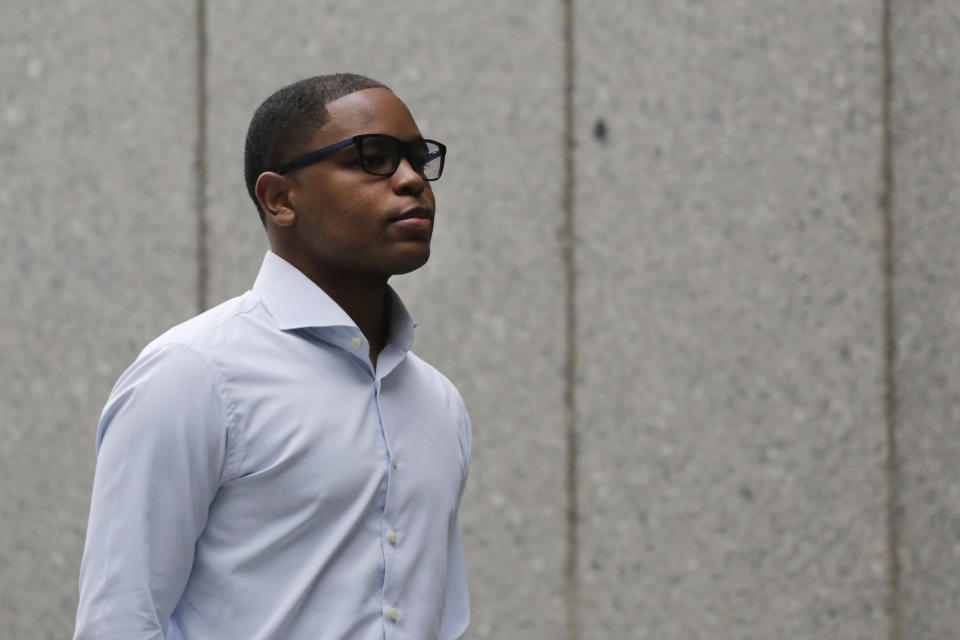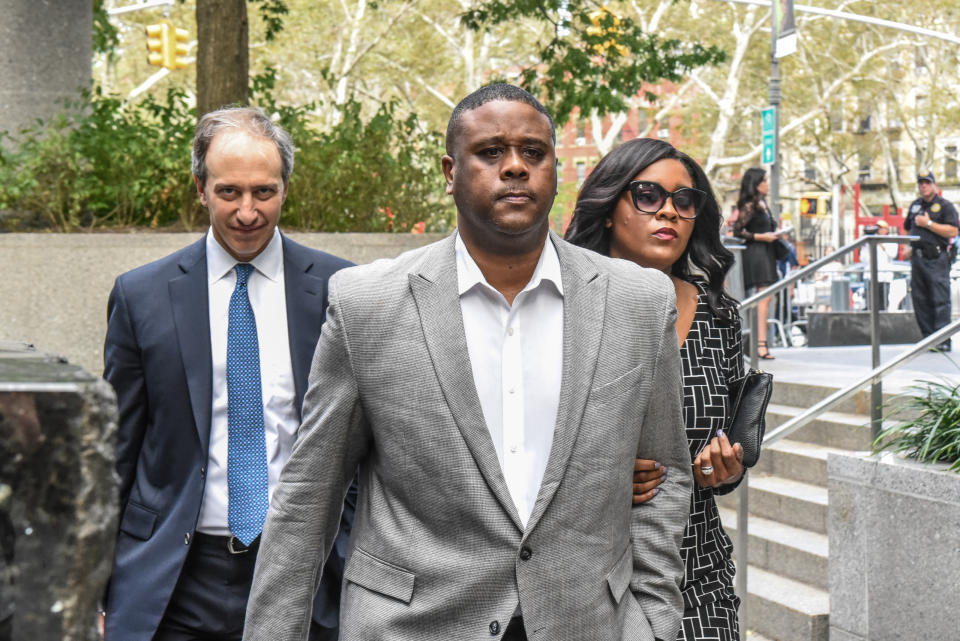Two numbers that could lead to not guilty verdicts in college hoops fraud trial

NEW YORK — Among the testimony and text messages, wire-tapped phone calls and ridiculous tales presented to a federal jury here the past three weeks, two numbers have the potential to weigh heavily on their coming deliberations – 35 and 20.
Neither involve illicit payouts, although they could. Rather, they connect to two of the men in college basketball’s federal fraud case that took plea deals with the government.
Financial adviser Munish Sood and Adidas consultant T.J. Gassnola agreed to testify in the trial of Adidas executives Jim Gatto and Merl Code and would-be agent Christian Dawkins. In exchange, they will receive a letter from prosecutors that may provide sentencing leniency.
Earlier in the trial, the prosecution asked each man what kind of prison time they were facing if they didn’t make the deal.
“Thirty-five years,” Sood said.
“Twenty years,” Gassnola said.
This is a case about under-the-table payouts to the families of basketball recruits and whether those NCAA prohibited rule violations rose to the level of fraud against the universities. It is not a case of major insider trading, Ponzi schemes or even terrorist activity, all of which are common place inside the Danial Patrick Moynihan Federal Courthouse here in Lower Manhattan.
This is … basketball.
And those numbers are huge, so huge they may just weigh over everything when a jury of eight women and four men get the case Thursday.
Wednesday saw assistant United States attorney Noah Solowiejczyk sharply and systematically lay out the government’s case in closing arguments. He was followed by Dawkins’ attorney, Steve Haney, who brilliantly blasted through weaknesses and made a not guilty verdict for his client very possible. Attorneys for Gatto and Code will go Thursday and attempt the same before the jury begins deliberations.
Trying to point the jury at favorable evidence is one thing. Haney, however, also took time to subtly make a more emotional point.
He reminded Gassnola and Sood faced “lengthy sentences” before flipping for the government and noted for Dawkins this “was the fight of his life” and that these were “serious federal crimes” and that the jury held “a 25-year-old man’s future in your hands.” At one point, he was even admonished by Judge Lewis A. Kaplan for saying “the consequences that can come from a guilty verdict.”
“Punishment in case of a conviction is not an appropriate [thing for a jury to consider],” Kaplan told the jury.
The point was made. In most state courts, mentioning sentencing possibilities for cooperating witnesses is an almost automatic mistrial for this basic reason. This is federal court, though, so the jury knows what Sood and Gassnola were facing and Haney wasn’t afraid to try to stoke their memories.
If Sood was up for 35, then what are these guys facing? Equal? Even more? Certainly, a lot.
For this?

That would mean taking, for example, Gatto, a balding 48-year-old family man who worked essentially as a middle manager in the Adidas marketing department, and putting him away for the rest of his life, or at least into his 80s.
Gatto does technically face considerable time if convicted on all counts. When originally charged, the government said he faced 80 years. The sentencing is made by Judge Kaplan, though. Lawyers who aren’t involved in the case but are familiar with it and the Southern District of New York, think he would face no more than six or seven years, at the very most. Three is more likely.
The jury probably doesn’t know that. Nor do they probably know that Dawkins and Code, veteran lawyers say, are likely facing no more than three years in prison if convicted.
The jury may only know 35 and 20.
They may think that one or all of these guys did something wrong and maybe should go away for a year or two. Putting them away for what is essentially life seems stark in a case that boils down to a multinational company giving money to poor and working-class families. Maybe some universities were truly defrauded as the government alleges, but other than that, no money was stolen, no people were injured, not much happened, other than Brian Bowen Sr. getting a nicer apartment and Billy Preston getting a nicer car.
Besides, it’s not like Gatto was living some lavish lifestyle off this fraud, the way it is in many federal cases. His defense attorneys, Michael Schachter and Casey Donnelly, made sure to enter his employment contract into evidence, showing he was making just $139,000 a year. It’s a good salary, but nothing eye-popping in New York City. Donnelly noted it took 25 years at the company to get to that.
It’s the same for the others.
Dawkins is just 25 and was just 22 and 23 when these alleged crimes occurred. He comes across as clean-cut, extremely bright and industrious – perhaps over industrious, but still. Sporting big glasses, he sits next to Haney taking notes and participating in his defense.
He’s guilty of trying to work back channels to set himself up as an owner in a major NBA sports agency. These charges notwithstanding, his future seems extremely positive. He’ll be successful in something … unless he’s shipped off to prison until he’s 60.
Code, 44, is no different. He’s barely mentioned in the trial, only occasionally appearing on phone calls, and seemed more like an assistant than anyone plotting things out. He’s a college grad, well dressed every day, represented by not just attorney Mark Moore but his own father, Merl Code Sr. Who is he hurting?
Each defendant has had family and friends there each day in court to support them, but Wednesday brought out a full house – rows of pleasant and pretty people, smiling and presenting the defendants as good guys caught up in a bizarre business. These are hardly the menaces to society that federal sentencing guidelines are designed to handle.
None of this is supposed to factor into deliberations. That’s why the lawyers are battling over facts and pushing various theories.
Jurors are human, though. So are defendants.
Thirty-five and 20 are laying out there, a heck of a lot of years for even what the government is claiming is a federal crime but to the jury may seem a lot more like a game gone bad. It’s no surprise the defense would like those numbers to be front and center when deliberations begin. It may be the secret key to winning.
More from Yahoo Sports:
• Sources: Red Sox warned about alleged Astros cheating
• Controversial trade backfires on Astros
• Pete Thamel: Top 10 college football QB prospects
• Tim Brown: Dodgers’ Machado emerges as October’s villain

